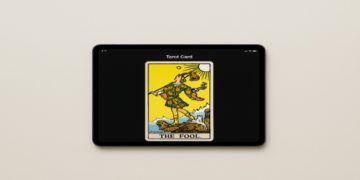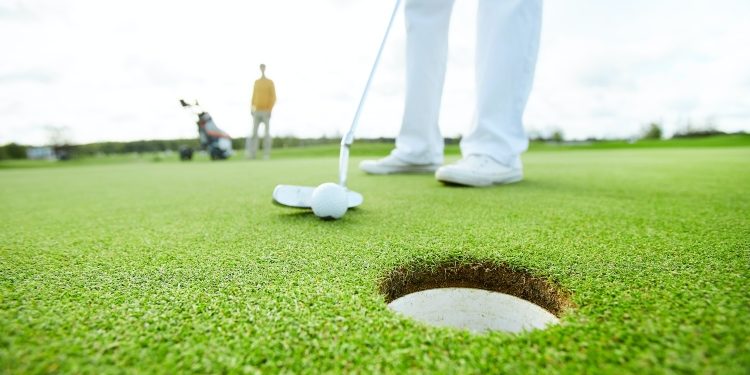With golfers spending more time on the green than any other part of the course, putting is arguably the most difficult part of golf. This is why it is of the utmost importance for you to choose the right golf putter to get the job done.
But how much does the type of golf putter you choose impact your performance? Is there a huge difference between each style of putter, or is it simply down to the player to make the most of the putter they have to hand?
Once you know what type of putter suits your style, don’t hesitate to grab the best golf cart bag you have in your storage. Let’s explore the different types of golf putters, their advantages, and whether or not they’d be an asset to your game.
Blade putter
The most traditional of all the putters in the modern game, the appropriately-titled blade putter consists of a thin, blade-like head that’s easy to swing but demands precision from the player using it.
Compared to other putters, blade putters are longer in the face yet have a significantly smaller sweet spot thanks to the solid, consistent build of the metal used to forge the head and the dispersion of materials directly behind the point of impact.
Virtually every golfer has used one of these putters at one point, and many who still use blade putters have had them for many years – they’re well-built and durable.
While they’re not specifically aimed at beginners, experienced players or veterans, the consensus is that they’re best suited to players with an arc-like putting stroke. This is a putting stroke in which the putter face is opened during the backswing and is brought back square in a closing motion upon impact, resulting in a (hopefully) straight and accurate putt.
Tiger Woods is the most famous example of a player with this style of putting stroke and can often be seen sporting his Scotty Cameron blade putter on the green. So if you have a similar putting style to Tiger, a blade putter will likely suit you down to the ground.
Mallet putter
Mallet putters are much larger in the head than their blade cousins – a design that’s intended to offer very specific results. Their bold, semi-circle-shaped head makes them difficult to miss.
At face value, a larger putter head should make the putting stroke more difficult, and this is true for a lot of players who are used to thinner, easier-to-manage putters. But the added difficulty can be worth the increased sense of stability players gain in their putting strokes.
The size and shape of the putter head, along with the distribution of weight, make it much harder to swing the putter out of alignment once you’ve squared up your shot. Many of them also feature a centre of mass that’s been pushed further back in the club head, for added control during your swing.
They’ve also been found to offer more forgiveness than traditional blade putters, thanks to their increased moment of inertia (MOI) which encourages the ball to remain on the correct path, even if the putt has been brought slightly off-centre on the follow-through.
It’s built to provide a smooth back-and-forward motion and suits golfers with a pendulum-like putting motion, or players looking to bring this type of putting motion into their game. So if this sounds like you, consider picking one up.
Modern mallet putters (High MOI)
Close relatives of mallet putters – but different enough to set themselves apart, modern mallet putters (or ‘High MOI putters’) will feel like something out of a science fiction movie for traditionalists, but they present plenty of opportunity for great putts.
They feature an oversized head, like mallet putters, but it’s the shape and style of the heads that draw attention. The heads are often distinctive and feature fang-like backs, with two “fangs” protruding on either side of the club head, with a gap in the middle, almost like walrus tusks.
These fangs aren’t just for show, though. They’re designed to help balance the club head on either side, encouraging you to keep the club face and stroke straight in line with your intended target. They’re also great for lining up your putt, as players can use the gap between the fangs as the perfect placement for their ball, just on the opposite side at the club face.
Alternatively, high MOI putters can be more filled out at the back, with funky design styles that grab attention while still offering great forgiveness and an extra level of weight and stability.
Again, these putters prove to be perfect for players with a pendulum swing, and those who prefer to keep their putters close to the ground while they move back and forward through the shot.
Examine your putting style to help you decide
The best way for you to know which putter will make the biggest difference in your game is for you to use as many of them as you can.
Before you head out onto your next course, take a second to head over to the practice putting green and see if you can borrow a few different styles of putter from the clubhouse or club shop. You could also choose TrackMan Simulator, which offers a cutting-edge golf experience, combining advanced radar technology with immersive simulation software. Elevate your game with accurate swing data and lifelike virtual courses.
Line up several golf balls, alternate between each of the putters, and see the results for yourself. Chances are, after a few shots, you’ll find yourself drawn to one putter over the rest – this will be the putter that not only feels great but delivers the type of putts you’re looking for.
Once you know what type of putter best suits your style, choose a reputable golf club seller to grab the new putter of your dreams and get ready for your short game to be vastly improved.
David Prior
David Prior is the editor of Today News, responsible for the overall editorial strategy. He is an NCTJ-qualified journalist with over 20 years’ experience, and is also editor of the award-winning hyperlocal news title Altrincham Today. His LinkedIn profile is here.














































































